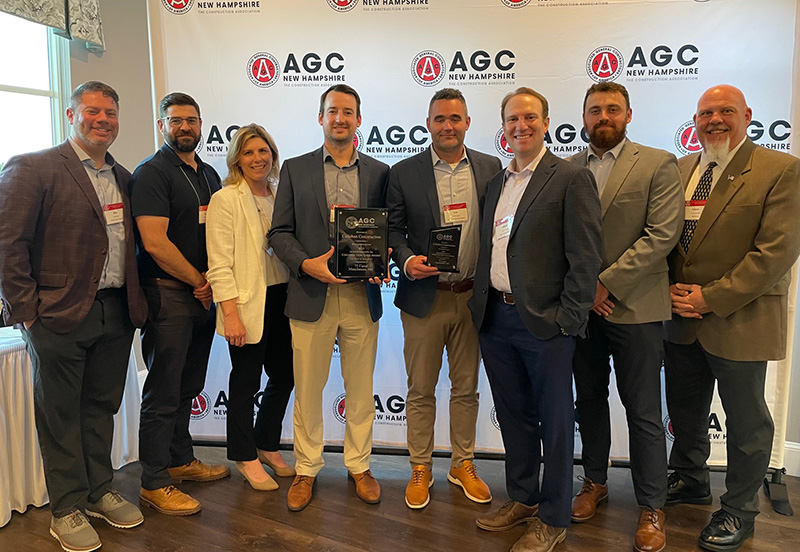News: Construction Design & Engineering
Posted: April 19, 2012
To some owners, brownfields are an expense. To others, they are a potential financial windfall
The U.S. Environmental Protection Agency (EPA) estimates that there are 450,000 brownfields sites throughout the country. To some commercial property owners, brownfields are seen as a major expense. To others, they are a potential financial windfall.
That is because of a tax credit included in the Brownfields Act: Chapter 206 of the Act of 1998, which was created as an incentive for developers to reclaim polluted property, as well as to stimulate economic growth by restoring abandoned properties, putting them back into use, and thereby creating jobs and generating property, excise, and income taxes from land that otherwise would lie fallow.
Under Mass. General Law Chapter 21E, if you buy (or control) polluted commercial property or if someone contaminates commercial property you own, you are responsible for cleaning it up. What many owners don't know is that they may be able to get the Commonwealth of Mass. to split the cost of that cleanup.
How It Works
To use a real-life example, a developer wants to determine if they qualify for the credit. They spent in excess of $2 million to clean up the site of a commercial office building. If successful, they could receive a tax credit in excess of $1 million. They have the ability to offset 50% of their taxes in the current year, or carry the credit forward for an additional 4 years (for a total of 5 years) in order to use the credit to offset taxes. The credit is also transferable, so the developer may choose to sell it.
Practically any costs "directly" relating to an environmental clean-up can qualify for the credit, including the cost to assess, contain, remove or otherwise respond to the contamination. Covered expenses may include the costs of LSP services, engineering, contractors, laboratory analyses and testing, legal fees, DEP and other agency fees.
For a project to qualify, it must meet all of the following criteria:
* The environmental damage must have been reported to the Mass. Department of Environmental Protection (DEP) and a permanent solution to clean the property and keep it clean must have been achieved. If the source of the pollution continues to contaminate the property, it will not qualify for a tax credit,
* The implementation must be conducted based on the Mass. Contingency Plan, generally under the direction of a licensed site professional,
* The property must be located in an economically distressed area (EDA), as determined by the DEP. Mass. alone has 351 cities and towns, of which 233 of them are either completely or partially in an EDA, including Boston,
* The cost of the clean up must exceed 15% of the appraised value of the property at the time of clean-up,
* The owner must be in good standing with the DEP, with no violations of any environmental restrictions, orders or mandates, and
* The property must be used for business purposes.
If a project fails to qualify for the 50% credit, it may still qualify for a 25% credit if the cleanup uses an activity and use limitation, which specifies allowable and prohibited uses for the property.
According to Warren Kirshenbaum, president of Cherrytree Group, LLC, a tax credit consultant and syndicator, "The market for brownfields tax credits is very strong. We have sustained demand for these credits, and have recouped millions of dollars of our clients expenditures by using this credit."
Take Advantage Before Credits Expire
In 2010 the deadline for applying for the credit was extended to January 1, 2014. The tax credit is transferable and can be carried forward for up to five years. Therefore, even if the taxpayer does not qualify for the credit they can lower their tax burden by purchasing credits from other companies at a discount.
The state brownfields tax credit can also be used in conjunction with other grants and tax credits, such as the federal historic tax credit, which is for projects listed on the National Register of Historic Places. Anyone who owns a brownfield site that may qualify should seek professional advice quickly, while the act is still in place.
If you think your project qualifies for a brownfields tax credit, contact your accountant and/or an experienced environmental consultant to help gather and document expenses, and to file the necessary paperwork.
Robert Calzini, CPA is a principal in the real estate group at DiCicco, Gulman & Co., LLC, Woburn, Mass.
MORE FROM Construction Design & Engineering
Nobis Group awards Robinson and Moreira STEM scholarships
Concord, NH Nobis Group, a 100% employee-owned consulting firm specializing in engineering and environmental solutions across the Northeast, has named the recipients of its 2025 STEM Scholarship: Andie Moreira of
Columns and Thought Leadership

Ask the Electrician: Is summer a prime time for commercial electrical maintenance?
The answer is “Yes!” While January marks the official new year, many businesses view September as a fresh start. This makes summer an ideal time for commercial property owners to schedule long-term electrical maintenance projects.

Careers in Construction Month focus on training and safety - by Joe Camilo
October is Careers in Construction Month, and rarely has it been more consequential. According to our chapter’s national parent organization, the construction industry needs to attract half-a-million new workers in the coming year to meet demand. Addressing that need is a huge job, but we at ABC MA are trying to do our part.

The rise of incubators and co-working spaces: The latest in life sciences - by Matt Combs
In recent years, the life science industry has witnessed a shift in how companies operate and innovate. One of the key driving forces behind this transformation is the emergence of incubators and co-working spaces specifically tailored to meet the unique budget and schedule needs of startups.

The design-build advantage: Integrated interior design solutions - by Parker Snyder
When it comes to corporate interior spaces for both commercial and industrial projects, partnering with a design-build firm with in-house interior design services can offer clients many benefits. Unlike traditional delivery methods where interior designers operate independently from the design and construction teams, often creating a longer project timeline as cost negotiations and revisions ensue







.png)
